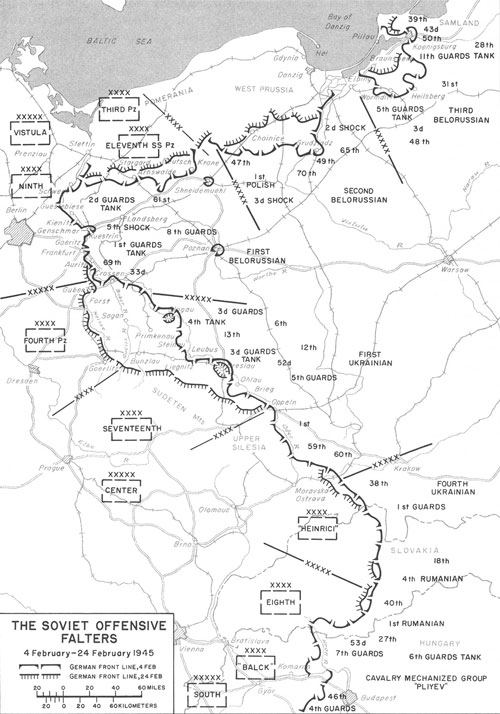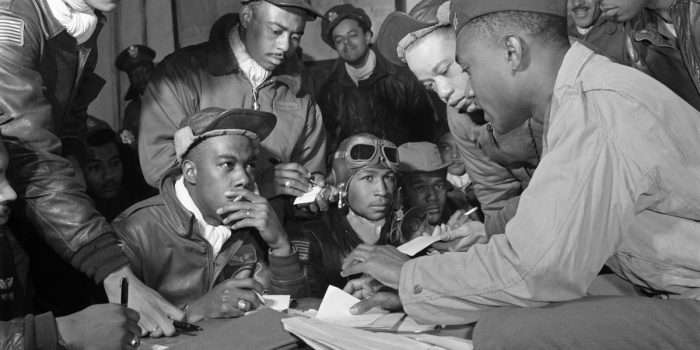How about this as a POD:
Panzerfausts are developed at least 12 months earlier. That gives time for the PzF 250 to enter service, which was equivalent to the RPG-2, which many claim was effectively a rip off of the German experimental design IOTL.
The reason it would matter ITTL would be the cumulative impact of infantry being able to deal with tanks more easily and causing extra attrition on Allied armor, which was their big offensive advantage by 1943 due to sheer mass. Obviously on its own it wouldn't change much or a single significant battle, but the extra attrition would add up and wear down the Allies quicker, which then over the course of an extra 12 months of production and use, especially starting in 1942 rather than 1943, would delay Allied victory by 3 months and make it significantly more costly. Virtuous circle for the Axis, vicious for the Allies.
This link gives the timeline of introduction of each time and production:

en.wikipedia.org
Assuming a 12 month head start that would put introduction at August 1942, full production (400k units per month) of the PzF 60 as September 1943 (very important for the fighting in the East and Italy), PzF 100 production ramping up in November 1943 (again important in the campaigns of late 1943-early 1944 and very important in Normandy), introduction of the PzF 150 (a major redesign and improvement) in March 1944 (again very important for Normandy and the Eastern Front, if not even Italy and the fighting around Anzio and the defensive line south of Rome), and the PzF 250 starting in September 1944, which was basically the RPG-2 in terms of performance.
Given the economies of scale of production of the weapon they could very well have double the number produced ITTL if production is set up earlier and of course the much better performing later models in time for the big battles of 1944, when IOTL only the weaker early models were just starting to get significant production. IOTL Normandy for instance only saw the Faustpatrone and PzF 30 used in significant numbers and even those were relatively minor but still caused the Allies substantial headache; ITTL they'd have easily double the numbers employed IOTL and the much longer range and more powerful PzF 100 and 150 in widespread use. Same applies to the heavy fighting in Ukraine and Belarus in 1944 where infantry IOTL were often just overrun by tanks as the early Panzerfaust models were still only in minor production by January 1944 and not widely issued (low 10s of thousands IIRC, roughly 10% of the September 1944 numbers); ITTL they'd have hundreds of thousands issued every month as of September 1943, so by January 1944 production would easily be 600k per month, more than 10x what it was IOTL. That would has a substantial impact of Soviet tank losses and offensive momentum in the extremely critical period of early 1944:
Clearly not going to change the outcome of anything, but cumulative attrition and reduced momentum would have a large impact over the course of an additional 12 months of use. How might campaigns like Normandy be impacted with 10x more Panzerfausts being issued with at least double the range and penetration power of the OTL models? Or for that matter Bagration?
Just from OTL studies about Wallied tank losses:
Panzerfausts and Panzershrecks were responsible for around 13% of tank losses in ETO almost as much as Pz IVs, Panthers, and Tigers combined. Hollow charge weapons in the ETO usually dealt losses at a range of 50 yards(46 m). A report from the 736th Tank Battalion noted that Hollow Charge weapons were used in German Towns and roadblocks and were used to disable tanks, rarely actually destroying the vehicle. When the tankers existed the immobile tank they were gun downed by enemy small arms, American tankers didn’t seem to have adequate training in this regard. 51% of hollow charge rounds hit from the side, 31% from the front, 9.5 % from the rear, and 8.5% from above.
As it was when Panzerfausts were at their peak production and battlefield usage they caused massive losses even in the hands of the Volkssturm:

en.wikipedia.org
- 1,997 tanks and SPGs destroyed[11]
Though it is very hard to calculate what increased panzerfaust usage would mean in terms of tank losses if we conservatively assume even a doubling of losses to panzerfausts were are looking at at least 750 more US tank losses in Europe, which is pretty huge when you consider the US was running out of tanks by the Battle of the Bugle and had to 'borrow' about 350 from the British, which had a reserve of about 1000 nationally. When you factor in British and other smaller allied nation AFV losses as well then you're looking at that entire British reserve evaporate and the US still being short as well, which means the PBIs have to carry the burden of combat all that much more with heavier losses.
Urban combat wasn't that much different from Bocage fighting or fighting in forests in Belarus in terms of range and cover, though of course being able to fire from elevated positions were tougher.
This POD would ensure the Soviets really aren't able to jump into the war in Asia until 1946, since they couldn't start moving East until the war with Germany was complete and heavier losses, especially in armor, would have a rather serious impact on their ability quickly turn around for another campaign. So the delay would mean winter then delays their ability to start attacking until Spring 1946.
I'll leave it up to those with more knowledge of the Pacific/Asian Theater to determine the impact on the war there.
It is hard to say what the impact would be on the campaigns of 1944, but an additional 3 months of combat for the Wallies and a worse Normandy would impose seriously heavy losses given the casualty rates the US was taking towards the end end of the war. In Europe in March and April 1945 the US was taking casualties as heavy as the worst months of Normandy:
November 1944-January 1945 was the worst period of the entire war in any theater for the US as well.
If you have 3 more months like that you'll definitely see more racial integration of the US army, as casualties and inability of the US replacement system to cope forced the first integration IOTL:
Until 1948, black soldiers served in segregated units in the US military. However, during the final months of the European theater of World War II, the military experimented with integrated companies. Although Hollywood and many historians would forget this experience, the success helped turn...

knowledgenuts.com
Assuming heavier losses overall plus several more months of fighting the US army alone could suffer some additional 200-250,000 casualties in Europe (basically double Normandy's casualties for the US and a ~30% increase in overall casualties in the European war), which is huge when you consider that the majority of losses hit the infantry (about 70% of casualties) and tankers the hardest. That would force major comb-outs of non-combat units and really unprepared service troops used as infantry and tankers, which would jack up losses even more since undertrained, inexperienced replacements suffered exceptionally badly from the US WW2 style replacement system. Britain would be in a really bad place considering that by 1944 they were disbanding divisions to keep the others up to strength and cutting the number of companies per battalion as well. The Canadians only using volunteers in Europe meant that they too were falling apart by late 1944 since they had hit peak manpower and were declining badly due to casualties.
So if the war goes into August 1945 the Wallies are really going to be exhausted with unknown effects on the political situation in Britain and the US and who knows what sort of revenge impulse after the war. Occupation is going to be quite hard, especially with the American soldiers demanding to go home ASAP when the war ended.
On the Soviet side they too would be quite a bit more exhausted, as 1945 was exceptionally brutal for them. Per Krivosheev, who is said to have understated casualties due to his statistical methods of calculating losses, nearly 3 million casualties in 4 months of fighting, with 2.1 million losses in the 1st quarter of 1945 and another 861,000 just in April-May 1945. So assuming that they have an extra quarter of fighting in 1945 even without assuming heavier losses in earlier months the Soviets take another 2.1 million casualties ITTL. That is going to make it exceedingly difficult to then shift to fight in Asia given that their ability to occupy Europe is going to be heavily impacted by those extra casualties.
I wonder if this might then result in avoiding the Cold War given how much more exhausted the Allies would be at the end. Assuming heavier losses for the Soviets for the 12 months of extra panzerfaust usage/production they might actually collapse sooner due to the crippling manpower losses, which IOTL caused pretty substantial problems for them post-war as it was.








